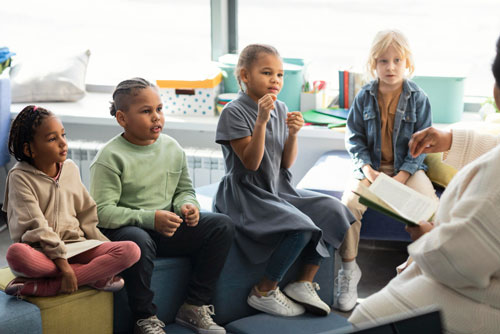In the realm of education, every child’s learning journey is unique. For children with dysgraphia, a learning difference that affects writing abilities, the traditional classroom setting can pose significant challenges.
However, with the proper support and strategies, educators and parents can create an inclusive learning environment that empowers these children to thrive. Understanding the complexities of dysgraphia and implementing effective teaching methods can pave the way for these students to reach their full potential.
Understanding Dysgraphia: A Holistic Approach
Dysgraphia is not merely about messy handwriting. It is a neurological condition that impacts a child’s ability to express thoughts through writing. In a classroom, this can manifest as struggles with spelling, organizing thoughts on paper, and poor handwriting.
By understanding the diverse manifestations of dysgraphia, educators, and parents can adopt a holistic approach to support these children effectively. It is crucial to recognize that dysgraphia does not correlate with a lack of intelligence, and with the right strategies, these students can excel.

Embracing Multisensory Learning Techniques
One of the most effective approaches for teaching children with dysgraphia is to embrace multisensory learning techniques. Integrating auditory, visual, and tactile elements into lessons not only caters to diverse learning styles but also accommodates the specific needs of children with dysgraphia. Encourage interactive learning by incorporating activities such as:
- Phonics-based games that emphasize auditory learning
- Tactile activities using textured materials for letter formation practice
- Visual aids such as mind maps and flowcharts for organizing ideas
By engaging multiple senses, educators can create a dynamic learning environment that fosters a deeper understanding and retention of concepts for children with dysgraphia.
Implementing Assistive Technology for Enhanced Learning
In this digital age, the integration of assistive technology has transformed the educational landscape, providing invaluable support for students with learning differences. When it comes to dysgraphia, various assistive tools can significantly alleviate the challenges faced by these students. Consider implementing the following assistive technology solutions:
- Speech-to-text software for overcoming writing challenges
- Interactive whiteboards for collaborative and visual learning
- Educational apps designed to enhance spelling and grammar skills
By leveraging these technological advancements, educators and parents can create a more inclusive and accessible learning environment, empowering children with dysgraphia to engage more confidently with the learning process.

Fostering a Supportive and Inclusive Classroom Environment
Creating a supportive and inclusive classroom environment is pivotal for the holistic development of children with dysgraphia. Foster open communication and encourage a culture of empathy and understanding among peers.
Educate classmates about dysgraphia, promoting a sense of camaraderie and reducing the stigma associated with learning differences. Additionally, it provides ample opportunities for one-on-one guidance and constructive feedback, ensuring that these students feel valued and supported in their academic journey.
Conclusion
In the pursuit of effective teaching strategies for children with dysgraphia, it is essential to foster an environment that prioritizes inclusivity, understanding, and innovation.
By embracing a holistic approach that integrates multisensory techniques, leverages assistive technology, and promotes a supportive classroom culture, educators and parents can empower these students to overcome challenges and unlock their full potential.
With the proper guidance and nurturing, every child, including those with dysgraphia, can flourish academically and personally, contributing meaningfully to their communities and beyond.






